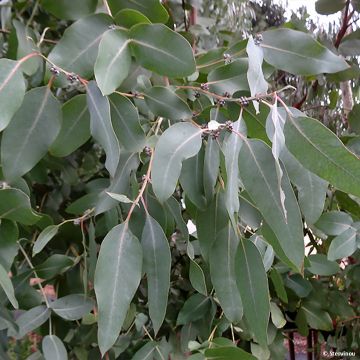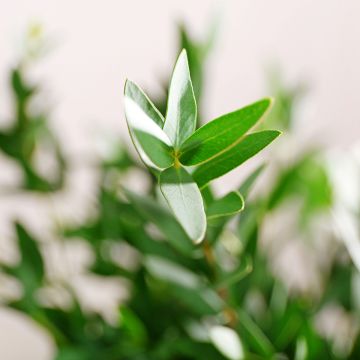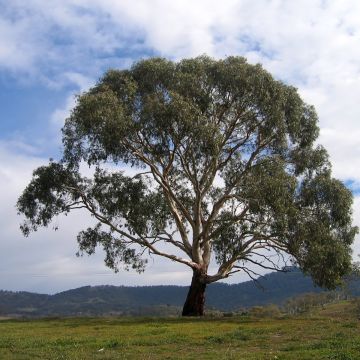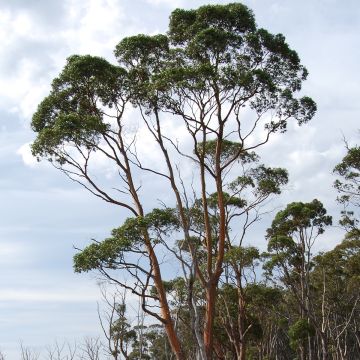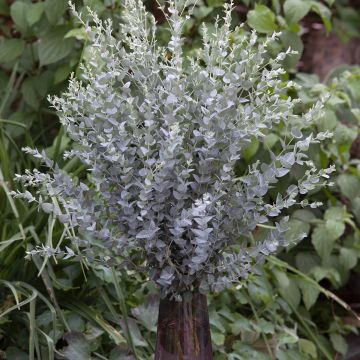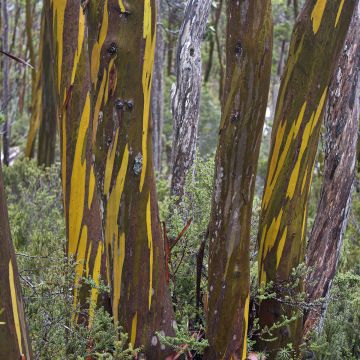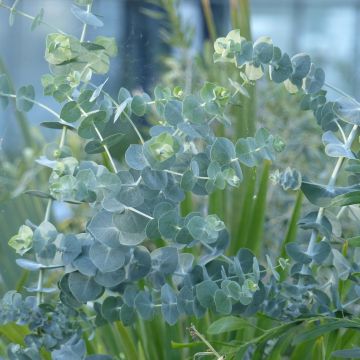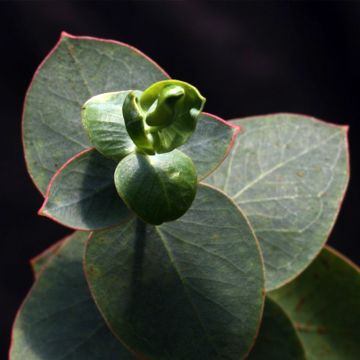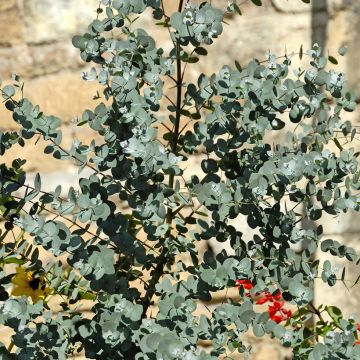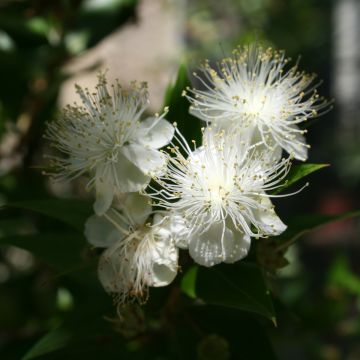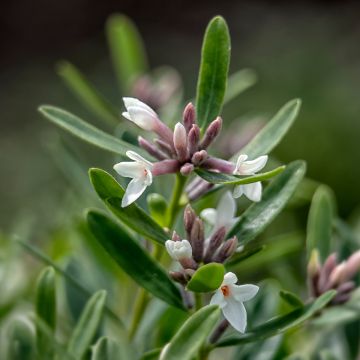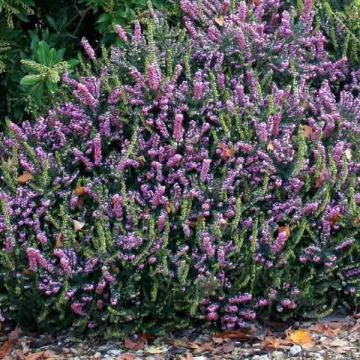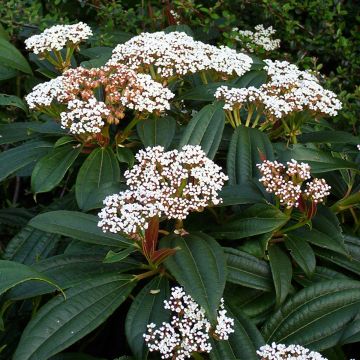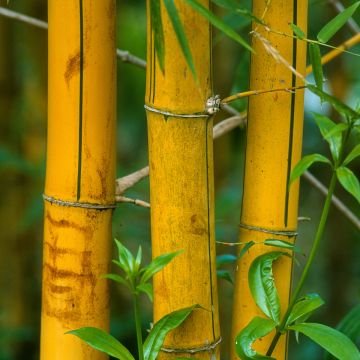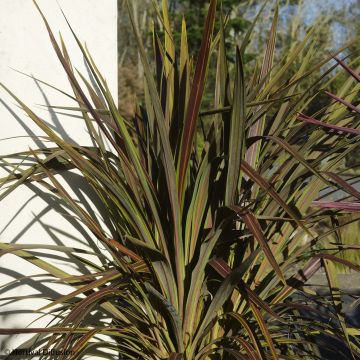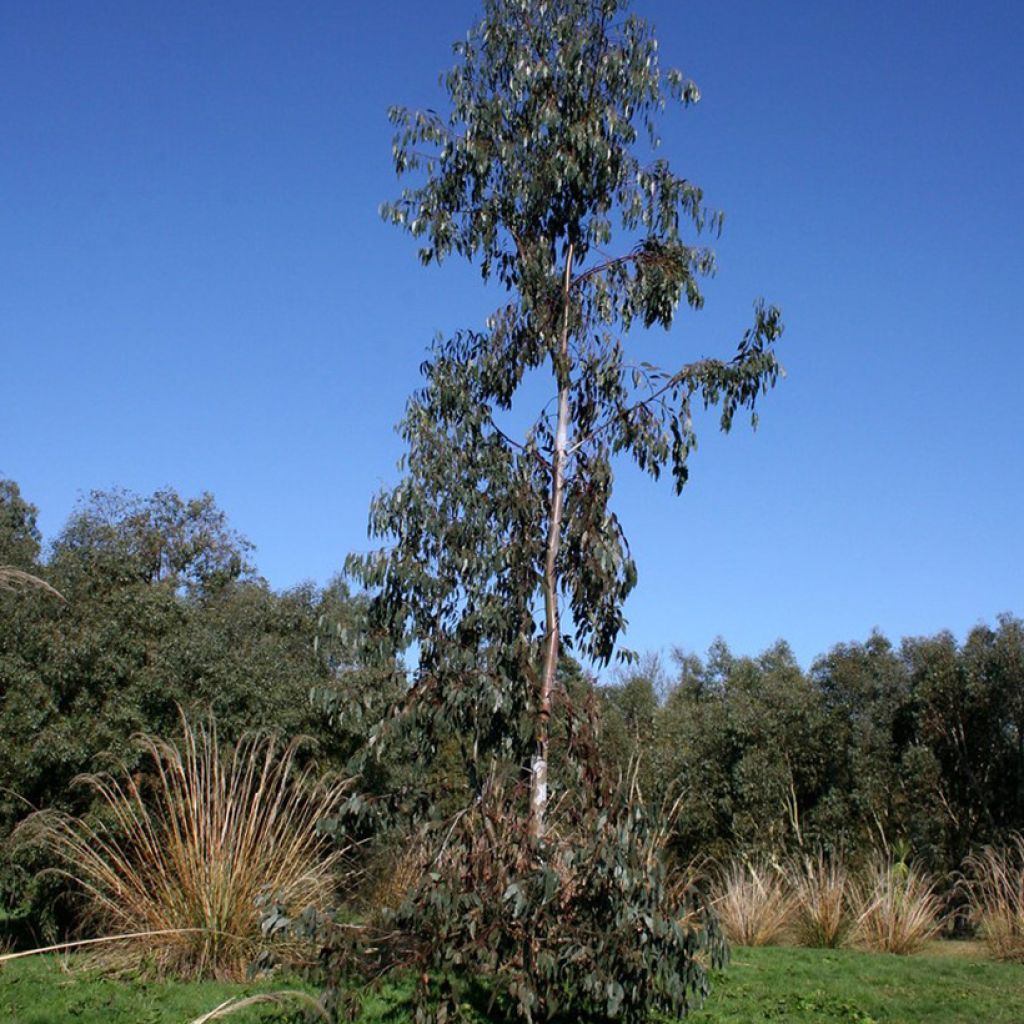

Eucalyptus glaucescens Guthega
Eucalyptus glaucescens Guthega
Eucalyptus glaucescens Guthega
Tingiringi Gum, Glaucous-leaved Blue Gum
Special offer!
Receive a €20 voucher for any order over €90 (excluding delivery costs, credit notes, and plastic-free options)!
1- Add your favorite plants to your cart.
2- Once you have reached €90, confirm your order (you can even choose the delivery date!).
3- As soon as your order is shipped, you will receive an email containing your voucher code, valid for 3 months (90 days).
Your voucher is unique and can only be used once, for any order with a minimum value of €20, excluding delivery costs.
Can be combined with other current offers, non-divisible and non-refundable.
Home or relay delivery (depending on size and destination)
Schedule delivery date,
and select date in basket
This plant carries a 24 months recovery warranty
More information
We guarantee the quality of our plants for a full growing cycle, and will replace at our expense any plant that fails to recover under normal climatic and planting conditions.
Would this plant suit my garden?
Set up your Plantfit profile →
Description
Eucalyptus glaucescens Guthega quickly takes on the posture of a beautiful specimen in a large garden, low-maintenance and attractive all year round with its particularly decorative barks and its evergreen foliage with bluish hues. The young foliage is very colourful and aromatic and much appreciated in floral compositions. Its origins from the Australian Alps bring it vigour and robustness, but also an excellent cold resistance capacity. This mountain variety tolerates limestone, but requires moist soil, not too dry in summer. Fast-growing, its installation in the garden requires the choice of a suitable location. In February-March, flowers appear which are rather insignificant, but fragrant and particularly attractive to bees. After this flowering, it tolerates pruning well, and its good regeneration capacities allow it to be grown with a single or multiple trunk.
Eucalyptus glaucescens is a beautiful tree with fairly rapid growth, varying in size depending on where it is located, between 15 and 40 metres (49 feet 2 inches and 131 feet 2 inches). However, in our climates, it rarely exceeds 15 metres (49 feet 2 inches) in height. More commonly named Tingiringi Gum Tree, it belongs to the Myrtaceae family. The species glaucescens is native to the mountainous areas of the far south-east of Australia, on both sides of the border between New South Wales and the state of Victoria in the high altitude areas represented by The Great Dividing Range, the Erica, Hotham, Brumby Point, Tingiringi or Tinderry and Tidbinbilla Ranges near Canberra. The glaucous colour of this eucalyptus' foliage aptly names the species: glaucescens, which comes from the Latin "glaucus" for the blue-green colour and "-escens" which means "becoming". It is recognisable by the white wax coating its branches, floral buds and fruits.
The variety Guthega is named after an Australian ski village and hydroelectric dam, located in Kosciuszko National Park on the upper course of the Snowy River, and the snow-capped mountains of New South Wales. In these harsh regions, it is found on well-drained granitic soils. Vigorous and fast-growing, this gum tree develops several trunks from its base, reaching approximately 15 m (49 ft 2 in) in height and 7 to 9 m (23 to 29 ft 6 in) in width at maturity, depending on the type of soil and climate. Its branching structure, around one or several trunks, forms a wide, fairly dense crown, with a spreading habit. A well-established subject can resist brief frosts of around -15°C (5 °F), but this varies depending on the age of the tree, the duration of the frost and the rise in daytime temperatures, as well as the moisture of the soil.
When young, the Eucalyptus glaucescens Guthega displays numerous pink and reddish branches bearing juvenile foliage composed of rounded silver-blue leaves. At this stage of strong growth, the bark becomes silver-green. Then, as it develops, the leaves take on a lanceolate shape, 8 to 15 cm (3.1 to 5.9 in) long and 3 cm (1.2 in) wide, shiny or dull and glaucous (green to blue-green). The tough leaves are slightly aromatic and release fruity aromas when crushed, rich in eucalyptol. As it ages, the bark is chalky white on its upper part and peels off in long strips, revealing a smooth underlayer, multicoloured in coffee, tin, orange, green, cream and salmon pink. The mature bark of the lower part of the tree is often fibrous and coffee-coloured. Flowering occurs in February-March on plants a few years old. The inflorescence, borne on a short petiole, is composed of 3 floral buds, glaucous or yellow-green, cylindrical, 3 to 5 mm (0.1 to 0.2 in), delicately fragrant and very attractive to bees.
This eucalyptus has a lignotuber, made up of a swelling rich in starch which forms on the roots just below the surface of the soil. This organ allows it to regenerate from the stump in case of severe frost, fire or severe pruning. The plant also produces numerous shoots from dormant buds located under its bark, allowing it to respond very well to coppicing, pollarding or more severe pruning. Note that the alpine gum tree tolerates snow, wind and sea spray. Its root system is not very extensive and therefore less dangerous for buildings and is less competitive with other garden plants. And its vegetation only provides very light shade.
The Tingiringi Gum Tree finds a place in the garden, planted alone, in a clear space, to appreciate the beauty of its barks and the elegance of its foliage. In order to highlight its architectural habit, it is grown with a single trunk or multi-trunks. It tolerates both semi-mountain and semi-arid climates in summer, and its cold resistance will go down to -15°C (5 °F). Comfortable in moist but not swampy soils, it has the ability to dry them out.
Report an error about the product description
Eucalyptus glaucescens Guthega in pictures
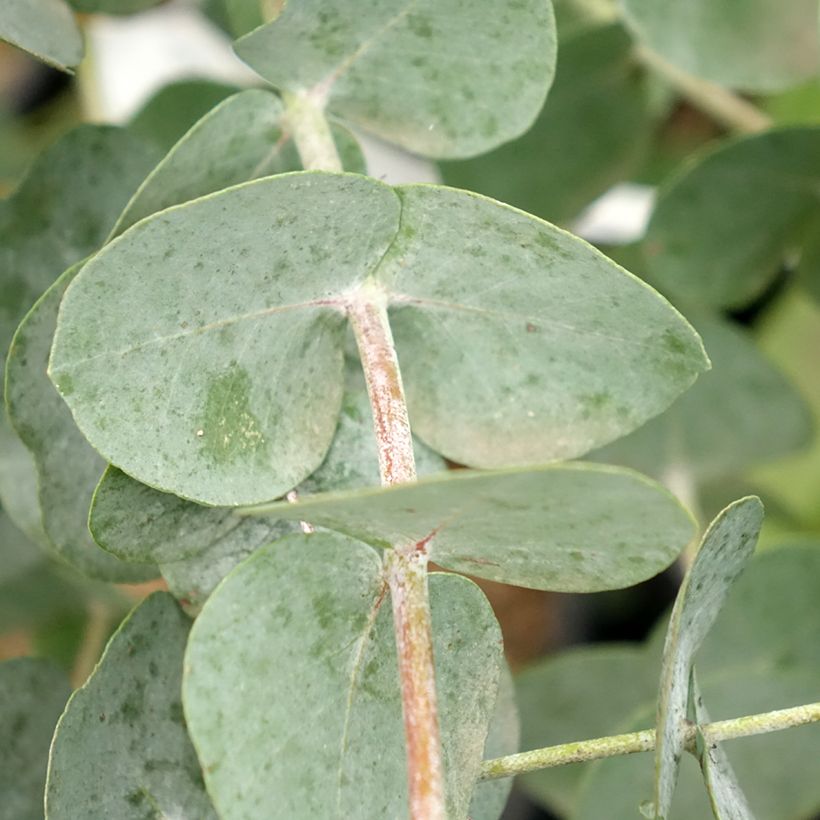

Plant habit
Flowering
Foliage
Botanical data
Eucalyptus
glaucescens
Guthega
Myrtaceae
Tingiringi Gum, Glaucous-leaved Blue Gum
Australia
Other Eucalyptus
View all →Planting and care
Eucalyptus glaucescens Guthega is best planted at the beginning of spring in cold regions, the beginning of autumn in a dry and hot climate. Plant it in well-prepared soil, not too dry to moist, in a very sunny situation. Clay or silty soils, even limestone, are well tolerated. A well-established bush is hardy down to -15 °C (5 °F) in these conditions and will tolerate snow. Young plants are more sensitive to severe frosts, especially if the frost settles for several days and the soil is damp. In most of our regions, you can plant it in the open ground, ensuring good drainage by a contribution of coarse sand, pozzolana or non-limestone gravel. Then let nature take its course, the growth is quite fast.
Water for the first two years, the bush does not require watering at all in summer once well established. Fertiliser is not recommended. Pruning is not necessary, and even discouraged, to let the unique habit of this superb eucalyptus express itself. However, it is well tolerated after flowering or at the end of summer. It is perfectly possible to form the eucalyptus on a single trunk, by selecting the one that is best placed and cutting all the others at ground level. And it is quite possible to cut back this small tree to form a large bush whose height you can limit.
Gum trees are useful for drying out damp terrains, as they are large consumers of water even in winter. However, they become quite resistant to drought once well established (depending on the species and varieties).
Young plants take root most easily in the open ground. The deep root system of the Eucalyptus does not like to be disturbed. Choose its location carefully.
Mountain species are interesting for their hardiness, but they dislike heatwaves and overly dry soils.
Planting period
Intended location
Care
This item has not been reviewed yet - be the first to leave a review about it.
Similar products
Haven't found what you were looking for?
Hardiness is the lowest winter temperature a plant can endure without suffering serious damage or even dying. However, hardiness is affected by location (a sheltered area, such as a patio), protection (winter cover) and soil type (hardiness is improved by well-drained soil).

Photo Sharing Terms & Conditions
In order to encourage gardeners to interact and share their experiences, Promesse de fleurs offers various media enabling content to be uploaded onto its Site - in particular via the ‘Photo sharing’ module.
The User agrees to refrain from:
- Posting any content that is illegal, prejudicial, insulting, racist, inciteful to hatred, revisionist, contrary to public decency, that infringes on privacy or on the privacy rights of third parties, in particular the publicity rights of persons and goods, intellectual property rights, or the right to privacy.
- Submitting content on behalf of a third party;
- Impersonate the identity of a third party and/or publish any personal information about a third party;
In general, the User undertakes to refrain from any unethical behaviour.
All Content (in particular text, comments, files, images, photos, videos, creative works, etc.), which may be subject to property or intellectual property rights, image or other private rights, shall remain the property of the User, subject to the limited rights granted by the terms of the licence granted by Promesse de fleurs as stated below. Users are at liberty to publish or not to publish such Content on the Site, notably via the ‘Photo Sharing’ facility, and accept that this Content shall be made public and freely accessible, notably on the Internet.
Users further acknowledge, undertake to have ,and guarantee that they hold all necessary rights and permissions to publish such material on the Site, in particular with regard to the legislation in force pertaining to any privacy, property, intellectual property, image, or contractual rights, or rights of any other nature. By publishing such Content on the Site, Users acknowledge accepting full liability as publishers of the Content within the meaning of the law, and grant Promesse de fleurs, free of charge, an inclusive, worldwide licence for the said Content for the entire duration of its publication, including all reproduction, representation, up/downloading, displaying, performing, transmission, and storage rights.
Users also grant permission for their name to be linked to the Content and accept that this link may not always be made available.
By engaging in posting material, Users consent to their Content becoming automatically accessible on the Internet, in particular on other sites and/or blogs and/or web pages of the Promesse de fleurs site, including in particular social pages and the Promesse de fleurs catalogue.
Users may secure the removal of entrusted content free of charge by issuing a simple request via our contact form.
The flowering period indicated on our website applies to countries and regions located in USDA zone 8 (France, the United Kingdom, Ireland, the Netherlands, etc.)
It will vary according to where you live:
- In zones 9 to 10 (Italy, Spain, Greece, etc.), flowering will occur about 2 to 4 weeks earlier.
- In zones 6 to 7 (Germany, Poland, Slovenia, and lower mountainous regions), flowering will be delayed by 2 to 3 weeks.
- In zone 5 (Central Europe, Scandinavia), blooming will be delayed by 3 to 5 weeks.
In temperate climates, pruning of spring-flowering shrubs (forsythia, spireas, etc.) should be done just after flowering.
Pruning of summer-flowering shrubs (Indian Lilac, Perovskia, etc.) can be done in winter or spring.
In cold regions as well as with frost-sensitive plants, avoid pruning too early when severe frosts may still occur.
The planting period indicated on our website applies to countries and regions located in USDA zone 8 (France, United Kingdom, Ireland, Netherlands).
It will vary according to where you live:
- In Mediterranean zones (Marseille, Madrid, Milan, etc.), autumn and winter are the best planting periods.
- In continental zones (Strasbourg, Munich, Vienna, etc.), delay planting by 2 to 3 weeks in spring and bring it forward by 2 to 4 weeks in autumn.
- In mountainous regions (the Alps, Pyrenees, Carpathians, etc.), it is best to plant in late spring (May-June) or late summer (August-September).
The harvesting period indicated on our website applies to countries and regions in USDA zone 8 (France, England, Ireland, the Netherlands).
In colder areas (Scandinavia, Poland, Austria...) fruit and vegetable harvests are likely to be delayed by 3-4 weeks.
In warmer areas (Italy, Spain, Greece, etc.), harvesting will probably take place earlier, depending on weather conditions.
The sowing periods indicated on our website apply to countries and regions within USDA Zone 8 (France, UK, Ireland, Netherlands).
In colder areas (Scandinavia, Poland, Austria...), delay any outdoor sowing by 3-4 weeks, or sow under glass.
In warmer climes (Italy, Spain, Greece, etc.), bring outdoor sowing forward by a few weeks.































